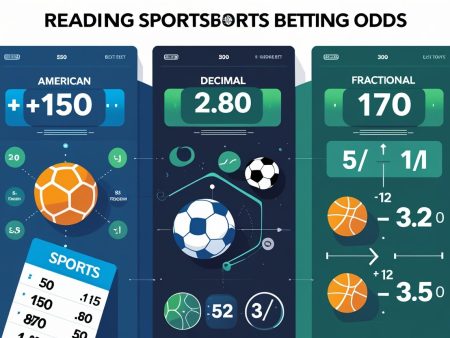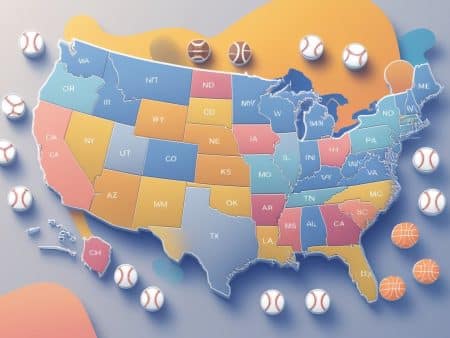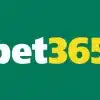New York is looking at big changes for its online sports betting market. A new bill from Gaming Committee Chair Carrie Woerner proposes adding more sportsbook operators and cutting the current 51% tax rate.
The proposal would lower the tax rate to 25% while expanding the number of licensed operators in the state by 2027.

This potential shift comes as lawmakers debate the high barriers to entry created by New York’s steep tax structure. The current rate forces operators to carefully consider whether they can be profitable in the Empire State.
Under the new legislation, the tax rate would decrease as new companies enter the market. Operators watching these developments should note that discussions are expected during the current legislative session.
The bill aims to balance state revenue needs with creating a more competitive marketplace that could benefit both betting companies and consumers in New York.
Background on New York’s Current Online Sportsbook Tax Policy

New York implemented one of the nation’s most aggressive tax frameworks when it legalized online sports betting. The current system places significant financial obligations on operators while generating substantial revenue for the state.
Existing Tax Rates and Structure
New York currently imposes a 51% tax rate on gross gaming revenue from online sports betting operations. This means sportsbooks must pay the state 51 cents of every dollar they earn in profit after paying out winning bets.
The tax applies uniformly across all licensed operators in the state. This high rate was established when online sports betting launched in January 2022.
Operators must pay this tax monthly based on their reported earnings. Despite the high rate, major sportsbooks like DraftKings, FanDuel, and Caesars entered the market, recognizing New York’s large population and strong sports culture.
The tax structure does not include sliding scales or brackets based on revenue volume. All operators pay the same percentage regardless of their market share or profitability.
Comparison With Other States
New York’s 51% tax rate stands as the highest in the nation for online sports betting. This rate is significantly higher than neighboring states and major gambling markets.
Tax Rate Comparison:
- New York: 51%
- Pennsylvania: 36%
- New Jersey: 13.5%
- Connecticut: 13.75%
- Michigan: 8.4%
This disparity creates competitive challenges for New York operators who must offer competitive odds and promotions while managing much higher tax obligations than their counterparts in nearby states.
The high tax rate in New York was partly justified by the size and value of the market. However, industry experts have questioned whether this model is sustainable long-term for operators trying to establish profitable businesses.
Role of Gross Gaming Revenue
Gross gaming revenue (GGR) forms the basis for calculating sports betting taxes in New York. GGR represents the total amount wagered by bettors minus the winnings paid out.
This calculation method means taxes are applied to the operator’s actual income rather than total betting handle. For example, if bettors wager $100 million and win back $95 million, the GGR would be $5 million.
At the 51% rate, operators would owe $2.55 million in taxes. The GGR model is standard across most U.S. gambling jurisdictions, though New York’s high percentage makes its implementation particularly impactful.
Promotional credits and bonuses further complicate GGR calculations, as these marketing expenses reduce operator margins.
Legislative History and Changes
New York’s sports betting tax policy emerged following the 2018 Supreme Court decision striking down the Professional and Amateur Sports Protection Act (PASPA). This ruling allowed states to legalize sports wagering.
The state first authorized retail sports betting at commercial casinos in 2019 with a 10% tax rate. Online betting faced longer debates centered on tax rates and licensing structures.
The current 51% rate was established through budget negotiations led by former Governor Andrew Cuomo. Gaming committee chair Carrie Woerner has recently introduced bill A6013, which proposes reducing the tax rate as the market grows.
This legislation also aims to increase the number of licensed sportsbook operators in the state. The push for reform reflects industry concerns about sustainability under the current tax framework.
Proposed Changes to the Online Sportsbook Tax Rate
New York lawmakers are exploring significant adjustments to the state’s current online sportsbook tax structure. The proposed legislation aims to reduce the tax burden on operators while potentially expanding the market.
Details of the Lower Tax Rate Proposal
The new bill introduced by gaming committee chair Carrie Woerner (A6013) proposes a substantial reduction in New York’s online sports betting tax rate. Currently, sportsbook operators face one of the highest tax rates in the country.
The legislation would cut the rate from its current level down to 25% by 2027. This tax reduction isn’t unconditional.
The proposal creates a sliding scale where the tax rate decreases as more operators enter the New York market. This approach aims to create a more competitive environment while still ensuring the state receives substantial tax revenue.
The bill also includes provisions to increase the number of online sports betting licenses available in the state. By opening the market to more operators, lawmakers hope to boost competition and provide more options for New York bettors.
Key Stakeholders Involved
Existing sportsbook operators stand to benefit significantly from the tax reduction. Companies currently operating in New York have consistently advocated for lower tax rates, arguing that high taxes limit their ability to offer competitive odds and promotions to customers.
State legislators supporting the bill, led by gaming committee chair Woerner, believe the changes would strengthen New York’s position in the regional sports betting market. They argue that a more balanced tax approach could actually increase state revenue through market growth.
Opposition comes primarily from those concerned about potential losses in tax revenue. Some lawmakers worry that lowering rates could reduce funds available for education and other public services currently supported by gambling taxes.
Timeline and Legislative Process
The proposed legislation is currently under review in the New York legislature. If approved, the implementation would likely follow a phased approach, with gradual tax reductions coinciding with new market entrants through 2027.
Industry analysts expect significant debate throughout the summer 2025 legislative session. The bill must clear several committees before reaching full floor votes in both chambers of the New York legislature.
Final approval would require the governor’s signature. Implementation timelines would then be established by the New York State Gaming Commission, which oversees gambling regulations and licensing processes throughout the state.
If passed, operators would need to prepare for both the tax changes and increased competition from new market entrants over the next several years.
Impact on Operators: What FanDuel, DraftKings, and Others Should Expect
New York’s potential tax rate reduction from 51% would significantly alter the financial landscape for major sportsbook operators in the state. Current proposals could cut the rate to 35-50% depending on market participation levels.
Revenue Implications for Major Operators
FanDuel and DraftKings, the market leaders in New York, would see immediate financial benefits from a tax reduction. Both companies have been vocal about the current 51% tax rate being unsustainable for long-term operations.
With a potential tax cut to 35%, operators could retain approximately 16% more revenue from each dollar wagered. This translates to millions in additional profits annually for major platforms.
Some operators have implemented 3-4% surcharges on winning bets in New York to offset the high tax burden. A lower tax rate could allow companies to remove these surcharges, making their offerings more competitive.
Financial projections suggest that even a modest 1% reduction in tax rates could result in substantial profit improvements for sportsbooks operating on thin margins.
Customer Acquisition and Marketing Effects
The current high tax structure has forced operators to limit marketing expenditures in New York despite its large population. A reduced tax rate would free up capital for customer acquisition.
FanDuel and DraftKings might increase promotional offers, including:
- Enhanced sign-up bonuses
- Match deposit incentives
- Risk-free bet opportunities
- Loyalty program improvements
Sports bettors would likely benefit from increased competition as operators invest more aggressively in capturing market share. This could drive innovation in betting products and user experiences.
Marketing budgets could expand by 20-30% under a more favorable tax structure, allowing operators to target casual bettors who haven’t yet joined the legal market.
Operating Leverage and Profitability
Lowered tax rates would improve operating leverage for all sportsbooks in New York. Fixed costs like technology infrastructure and licensing fees become more manageable with improved margins.
DraftKings executives have stated that high-tax jurisdictions create profitability challenges that affect their overall business model. A tax reduction addresses these concerns directly.
Smaller operators would gain more breathing room to establish market presence. The current tax structure disproportionately harms smaller sportsbooks with less financial cushion.
Improved profitability could accelerate technology investments, including:
- Faster bet processing
- Enhanced mobile experiences
- Better data analytics
- More advanced risk management tools
Better operating leverage would position New York operators to weather seasonal fluctuations in betting volume without severe financial strain.
Comparison With Tax Rates in Key Markets
New York’s 51% tax rate on sports betting revenue stands as the highest in the nation, dramatically affecting operator profitability compared to neighboring states. Tax structures in other states offer various models that New York legislators may consider as they debate potential reforms.
New Jersey: A Nearby Benchmark
New Jersey maintains a significantly lower tax rate of 13.5% for online sports betting revenue. This favorable tax environment has helped the Garden State build a robust betting market since legalizing sports wagering in 2018.
The lower tax burden allows operators to invest more in marketing, customer acquisition, and promotional offers. These investments have paid off – New Jersey consistently ranks among the top sports betting markets in America by handle volume.
The stark contrast with New York’s 51% rate explains why many New York residents previously crossed state lines to place bets before New York legalized mobile betting. Even now, serious bettors may find better odds and promotions in New Jersey due to the tax differential.
Indiana and West Virginia Tax Approaches
Indiana employs a flat 9.5% tax rate on sports betting revenue, positioning itself as one of the more operator-friendly markets in the country. This lower rate has attracted numerous sportsbooks to enter the market, creating healthy competition.
West Virginia similarly offers favorable conditions with a 10% tax rate. Both states demonstrate a philosophy that prioritizes market growth and competition over maximizing immediate tax revenue.
These moderate tax environments allow operators to:
- Offer more competitive odds
- Provide generous welcome bonuses
- Invest in platform improvements
- Sustain operations during seasonal downturns
The success of these markets suggests that lower tax rates can create sustainable ecosystems where both operators and state treasuries benefit long-term.
Massachusetts and Ohio’s Models
Massachusetts implemented a tiered approach when launching online sports betting in 2023. The state taxes retail betting at 15% while imposing a higher 20% rate on mobile wagering.
Ohio adopted a flat 10% tax rate when its market launched in January 2023. The state quickly emerged as a major betting market, with strong operator participation and substantial handle numbers in its first year.
Both states carefully studied existing markets before setting their rates. Their middle-ground approach aims to balance:
- Generating meaningful tax revenue
- Attracting quality operators
- Creating competitive market conditions
- Supporting responsible gambling programs
These newer markets provide valuable case studies for New York as it considers potential tax adjustments.
Recent Developments in North Carolina
North Carolina‘s online sports betting market is set to launch in 2024 with an 18% tax rate on gross gaming revenue. This rate places it in the middle tier of state tax structures – significantly lower than New York but higher than the most operator-friendly states.
The North Carolina legislature carefully considered market competitiveness when establishing this rate. They determined 18% would generate substantial revenue while still allowing operators to build viable businesses.
Early projections suggest North Carolina will attract most major sportsbooks despite not having the lowest tax rate. This indicates that operators consider multiple factors beyond just taxation when entering new markets.
The North Carolina approach represents a potential compromise model that New York could consider as it debates potential tax reforms.
Expected Effects on State Revenue and Economics
New York’s potential shift from its current 51% tax rate would significantly alter both state finances and industry dynamics.
Revenue patterns, betting margins, and market competitiveness would all experience substantial changes with any tax adjustment.
Short-Term and Long-Term Revenue Impact
In the short term, New York would likely see a decrease in tax collections if the rate drops to around 25% as proposed.
Based on 2023 figures where the state generated over $800 million in sports betting tax revenue, a rate reduction could initially cut annual collections by hundreds of millions.
A lower tax environment would likely attract new operators, increasing competition and potentially growing the overall betting market.
The state’s calculation involves a crucial tradeoff: accepting lower immediate percentage returns in exchange for potential growth in the total taxable base.
Revenue stabilization would likely take 2-3 years as the market adjusts to new conditions.
Hold and Margin Considerations
Sportsbook hold percentages and profit margins would improve significantly under a lower tax structure.
The current 51% tax forces operators to maintain higher holds (the percentage of wagers they keep after paying winners) to remain profitable.
With tax relief, operators could reduce their hold requirements, potentially offering better odds to bettors and more competitive promotions.
Increased reinvestment in product development would also be possible.
A typical sportsbook hold ranges from 5-7%, but New York’s high tax rate has pushed operators toward the upper end of this range.
Tax reduction would allow sportsbooks to operate closer to national averages while maintaining healthier profit margins.
Broader Industry and Market Outcomes
Market expansion represents the most significant potential economic benefit.
Lower barriers to entry would likely attract additional sportsbook operators beyond the current limited field.
The industry effects would include job creation through new operator offices and support staff.
Technology investment would increase as companies compete on platform features.
Marketing expenditures would likely rise as competition intensifies.
Gross gaming revenue could potentially grow by 15-30% within three years after tax reduction, according to industry analyses.
This expansion would benefit adjacent sectors including advertising, data services, and payment processing.
The consumer experience would also improve through increased competition.
This could bring New York’s betting market closer to more mature markets like New Jersey or Pennsylvania.
Regulatory and Social Considerations
The potential tax rate changes in New York’s sports betting landscape extend beyond economic factors into important regulatory and social dimensions.
Industry groups, problem gambling concerns, and responsible gaming initiatives all play crucial roles in shaping sustainable betting policies.
American Gaming Association’s Perspective
The American Gaming Association (AGA) has consistently advocated for reasonable tax structures in sports betting markets.
The organization points to evidence that excessive tax burdens can push consumers toward illegal gambling options that lack consumer protections.
In New York’s case, the AGA has suggested that the current 51% tax rate creates challenges for licensed operators to compete effectively against offshore sites.
These unlicensed platforms pay no taxes and often offer better odds to bettors.
AGA research indicates that states with moderate tax rates between 15-20% typically achieve better market balance.
They argue New York’s proposed tiered system could help legitimate operators compete while still generating substantial tax revenue.
Impacts on Problem Gamblers
High tax rates indirectly affect problem gamblers by influencing operator behavior.
When facing steep taxes, sportsbooks may reduce spending on responsible gaming programs or increase aggressive marketing to maintain profits.
New York’s Department of Health estimates that 5% of adult New Yorkers experience gambling problems.
The state dedicated only $6 million to problem gambling services in 2023, despite collecting over $700 million in sports betting taxes.
Mental health professionals have expressed concern that any tax restructuring should include provisions for increased funding for gambling addiction services.
Several advocacy groups have requested that 3-5% of tax revenue be specifically earmarked for prevention and treatment programs.
Responsible Gaming Initiatives
New York requires licensed sportsbooks to implement responsible gaming measures regardless of tax rates.
These include self-exclusion programs, deposit and time limits, problem gambling detection algorithms, and mandatory staff training.
Industry experts note that operators in lower-tax jurisdictions often exceed minimum requirements with innovative safeguards.
For example, sportsbooks in New Jersey (13% tax rate) have developed AI tools that identify problematic betting patterns before they escalate.
The proposed legislation includes provisions requiring operators benefiting from reduced tax rates to invest a portion of savings into enhanced responsible gaming technology.
This approach aims to balance competitive markets with social responsibility.
Future Prospects for Online Sports Betting in New York
New York’s sports betting landscape stands at a crossroads with potential tax reforms and market expansion on the horizon.
These changes could significantly alter how operators and bettors interact in what has become one of America’s largest betting markets.
Potential Changes to Market Dynamics
A new bill proposes lowering New York’s current 51% tax rate on online sports betting revenue to 25% by 2027.
This substantial reduction would align the state more closely with competitive markets in neighboring states.
The legislation also aims to increase the number of licensed operators in the market.
If implemented, these changes could create a more diverse betting ecosystem with improved odds and promotional offerings for sports bettors.
The current high tax environment has forced operators like DraftKings to add surcharges of 3-4% on winning bets to offset costs.
Expanded operator access would likely intensify competition, potentially driving innovation in betting platforms and user experience.
The New York market has generated over $800 million in tax revenue in 2023 despite the challenging tax structure.
Opportunities and Challenges for Sportsbooks
Sportsbooks operating in New York face a mixed outlook.
The potential tax reduction represents a major opportunity to improve profitability in what remains one of the most valuable betting markets in the US.
Lower tax burdens could allow operators to offer more competitive odds and increase promotional spending.
Operators could also invest in better technology and user experience, and remove surcharges currently placed on winning bets.
However, challenges remain significant.
Even at a reduced 25% rate, New York would still maintain one of the higher tax structures nationally.
New entrants to the market would face established competitors with existing customer bases.
The timeline for implementation (reportedly by 2027) means operators must navigate the current high-tax environment for several more years.
Success will require careful balancing of customer acquisition costs against long-term profitability goals in this evolving regulatory landscape.
Conclusion
The potential lowering of New York’s online sportsbook tax rate represents a significant shift in the state’s approach to sports betting regulation. If implemented, this tiered system could reduce rates from the current high of 51% down to as low as 35% depending on the number of licensed operators.
Operators have consistently argued that high tax rates limit their ability to compete effectively and provide attractive odds to consumers.
Other states are watching New York’s decision closely as they consider their own tax structures. This potential policy shift highlights the ongoing tension between maximizing state revenue and creating a sustainable marketplace for betting operators.
The timing of these discussions coincides with growing competition from event contract operators who often pay no state taxes. This puts additional pressure on traditional sportsbooks.
Operators should prepare for potential changes by analyzing how different tax scenarios might affect their profitability and marketing strategies. They should also consider how additional licenses might alter the competitive landscape.












